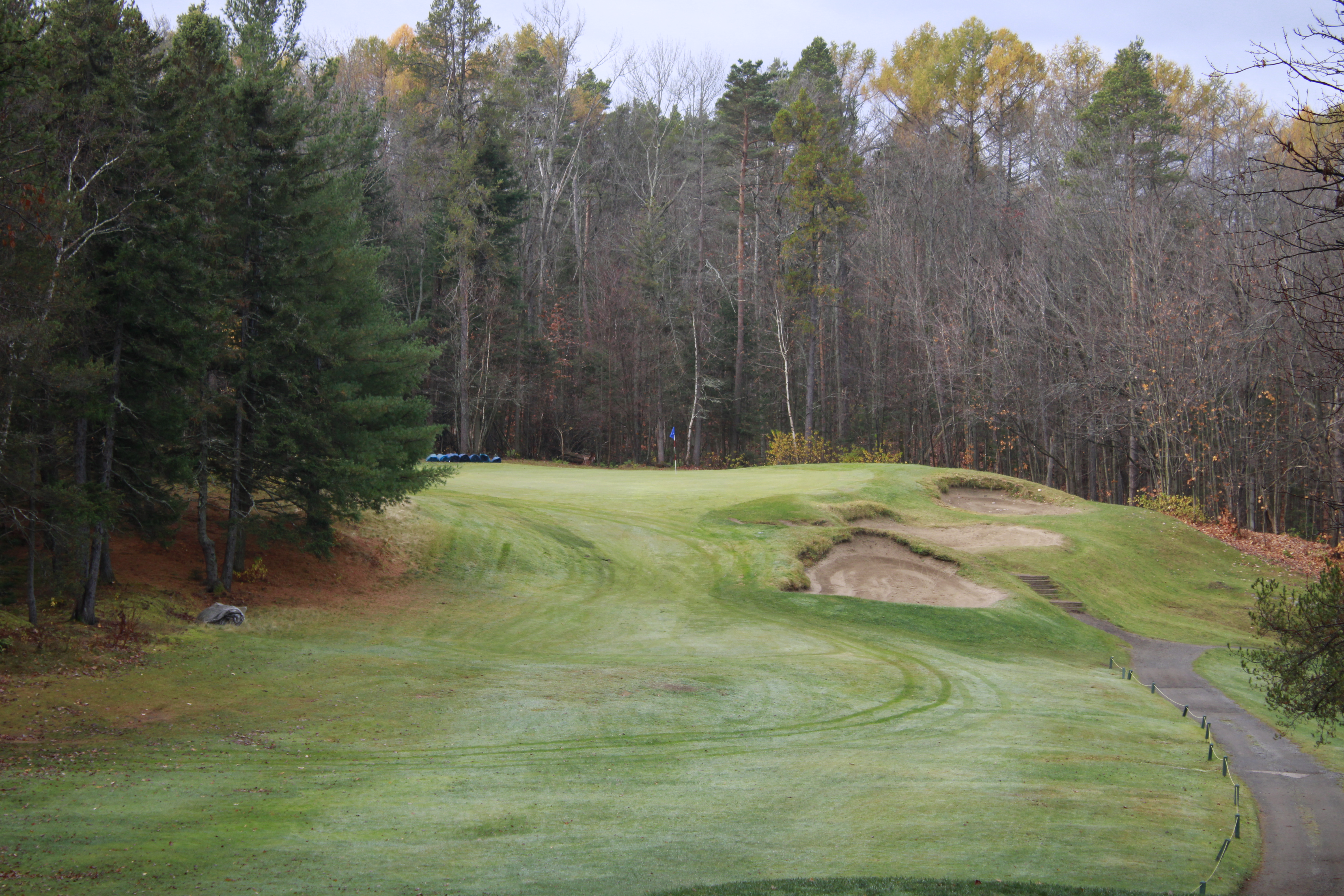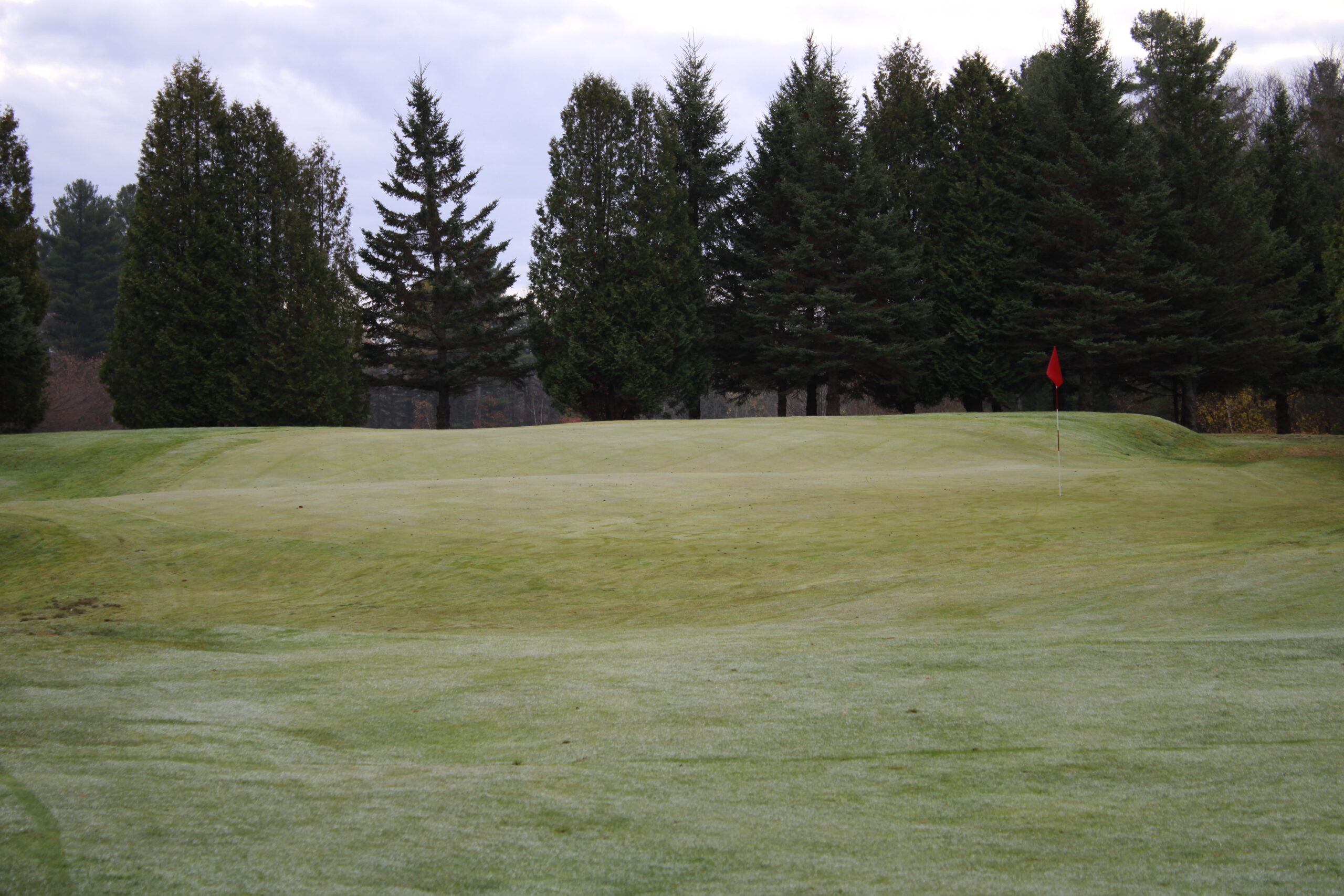Despite being just shy of seven hours door to door from my house, I have made the trip to Shawinigan, Quebec to see Club de Golf Grand-Mére on three separate occasions: April 2021, when Ontario closed golf and Quebec stayed open; May 2022 on my Royal Montreal trip; and again in October 2022 with Beyond The Contour author Zachary Car.
It is a completely reasonable question to ask… why? Seven hours from Toronto almost gets me to the New Jersey side of New York, outskirts Philadelphia, most of Michigan, most of Ohio, and anything in Ontario you would want to see. And, for those who have been, Shawinigan is not exactly Mont-Tremblant or Whistler, especially for a guy who speaks zero French. Try ordering a bagel with cream cheese in a language you have never spoken! All this to see a golf course removed from the spotlight for nearly a hundred years.

Grand-Mère, like many of Canada’s great golf courses, is a product of corporate expansions, and namely, part of the appeal of working in rural Canada. Grand-Mére opened as a perk for employees of The Laurentide Company, a pulp and paper manufacturer in the area. Thanks to Anthony Gholz, we know the original golf course’s opened at the hands of Frederic de Peyster Townsend in 1912. By 1916, the course expanded from 3 holes to 9, and in 1917, Walter J. Travis comes to town to renovate the golf course. In 1921, Harry Colt’s partner C.H. Alison expands the golf course to 18 holes. To this day, the golf course we play is made up of Walter Travis and Hugh Alison’s architecture. In total, the opening five holes, 9, and 10 are accredited to Walter Travis, while holes 6-8, 11-18 are Hugh Alison.
Even with such a lineup of architects, it becomes easy to doubt the architecture at such a place. Shawinigan, Quebec? Really? Did they actually come up here, or is this another Beach Grove situation claiming the wrong architect (for the readers, Beach Grove is a Devereux Emmet claiming to be a Stanley Thompson, but a story for another time). Oh, and there is virtually zero coverage of Grand-Mére. In the age of multimedia, surely someone from SCOREGolf, or a random golf Instagram account would find Grand-Mére. I suppose not… if that were true, this article would be redundant.
Those doubts are cleared up immediately on the 318 yard, par 4, 4th. In my view, a deserving hole to be crowned Canada’s best drivable par 4… and yes, better than: Hamilton’s 5th, Mickelson National’s 7th, Cape Breton Highlands Links 8th, Cabot Links 3rd, Scarboro, Victoria, Westmount, Blackhawk, or any of the other challengers. Even Zac, who had to listen to me hype up Grand-Mére for over a year, felt that concern I did on my maiden trip in April 2021. By the time we walked off the 4th, that feeling had vanished.

This is no one-trick pony, however, and if you come just expecting an epic drivable par 4, well, there is more in store. At Grand-Mére, if there is an ebb, a flow down the road awaits; a ying is always followed by a yang, and so forth. No better way to showcase the balance by the way the routing playfully dances between the heathland holes and Pine Valley holes. On the first half, the heathland aura takes the reins, though not without a tease of the back nine’s vibe at the one-shot holes at the 5th and 8th. Expansive corridors with gentle, yet purposeful land characterize the front nine. Small and powerful features, like the central hill the 5th, 6th, 8th and 9th play into and off of, or the small burn on the 7th, make all the difference in helping elevate the architecture. It becomes easy to gravitate towards the maze of bunkers on the 9th, especially considering the Biarritz green bookends the front nine, and through nine, this golf course rock solid.
- Looking down at the par 4, 9th from the tee
- The aforementioned Biarritz at the 9th
Aside from a small tease on the par 3, 5th and a more definitive introduction on the par 3, 8th, the golfer’s full immersion into the second setting at Grand-Mére comes at the 10th tee box. No longer are we in the spacious Québécois landscape. Rather, we are hurdling over a canyon akin to Pasatiempo’s 10th, playing across to the rockiest part of the property. In short, it feels like Pasatiempo meets Pine Valley; Brookline meets Hamilton. I have yet to find a place in Canada to meet such a unique definition of variety, yet effortlessly achieving a sense of place and never straying away from its ethos and purpose.
In fact, most of the golf course relies on the Pine Valley playbook. Holes are separated by trees, and even on the par 4, 16th, there are breaks in the fairway as if Alison just lifted the hole and transplanted it 775KM north from Pine Valley. Only on the par 3, 13th do trees actually begin to interfere with the golf hole, a real achievement in the over-treed province of Quebec. Of courses older than 60 years old, only Mount Bruno and Grand-Mére even resemble some sense of proper tree maintenance. That just so happens to be Quebec’s two best golf courses—go figure.
[Grand-Mére] feels like Pasatiempo meets Pine Valley; Brookline meets Hamilton. I have yet to find a place in Canada to meet such a unique definition of variety, yet effortlessly achieving a sense of place and never straying away from its ethos and purpose.

The most impressive part of Grand-Mére is not the trees, though that is an achievement in its own regard, but what little work has occurred after 1921. On your drive in, it becomes all-so-clear that The Laurentide Company is no longer in Shawinigan. The days of Grand-Mére’s budding economy are in the rearview mirror, and likely as a result, Club de Golf Grand-Mére have not had the money to alter the course much, if at all. What does this mean? The golf course we play is exactly as Charles Hugh Alison envisioned when he left in 1921. All eighteen greens perfectly remain in their Golden Age charm. Walter Travis’ usual flair confounds players, and Alison’s grace allows for reprieve. Want a Biarritz? You have it at the 9th. How about a heart shaped par 3 acting as an upside down Lion’s Mouth? They have that, too. A redan? That the concept is there, though with its own adaptation.
If you are asking what the secret sauce of Grand-Mére is, the answer is longevity. Architecture principals that have lasted over 100 years continue to inspire brilliant, confounding, and fun golf to this day, all at the cost of $39. No other golf course in Canada can claim such authenticity to its original vision. No other golf course in Canada draws direct inspiration from Brookline, Pine Valley, Sunningdale, and more in a single routing.
Sure, it remains slightly under-conditioned for the architectures enthusiastic concepts presented, and no doubt, better conditioning would showcase the strategies more. It is not hard to see why the course struggles with conditions more-so than a Toronto Golf Club or Capilano. For $39, the greens rolled nice, and the ball sat up in the fairways. Firm bounces are not uncommon, and a difficult lie is almost unavoidable. The club is working on general upkeep, and that comes with time. Truthfully, money can only do so much in a tough climate like Trois-Rivières, but on my three spins, no conditioning issues or anything of mention, and the conditioning is no better or worse than Cape Breton Highlands Links, arguably Canada’s best golf course. As Zac so elegantly put, this is the top 20 golf course (next to) nobody has played, that is, until Beyond The Contour‘s 2023 event at Club de Golf Grand-Mere.












Leave A Comment